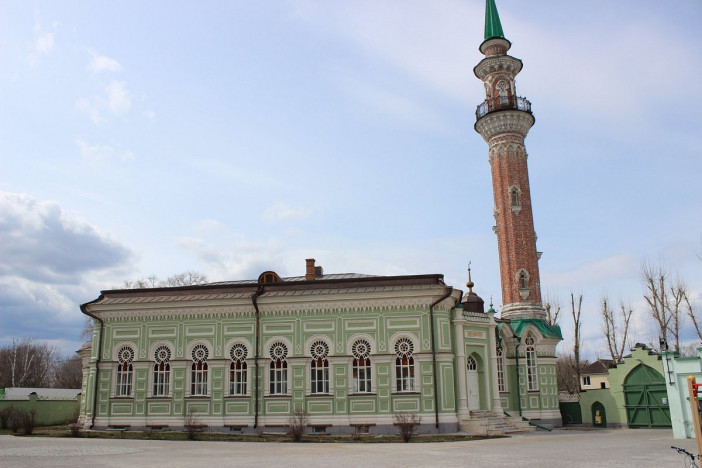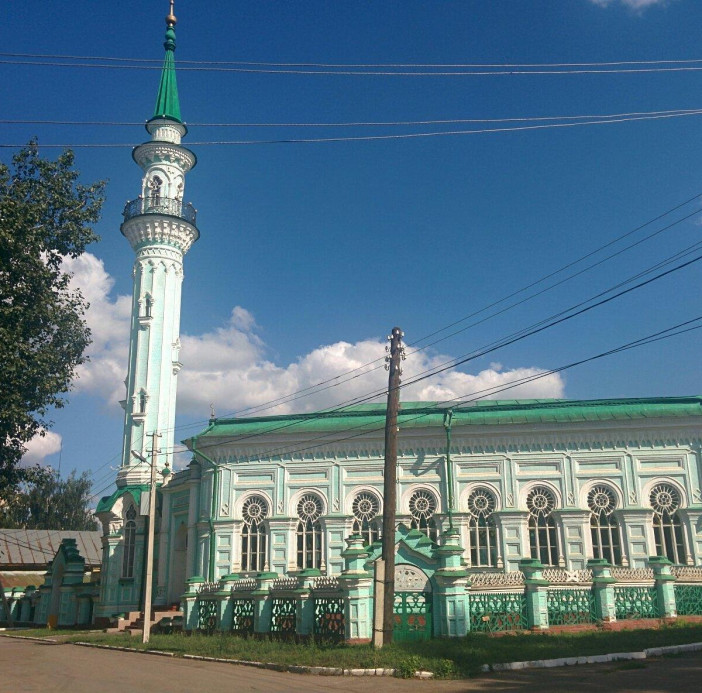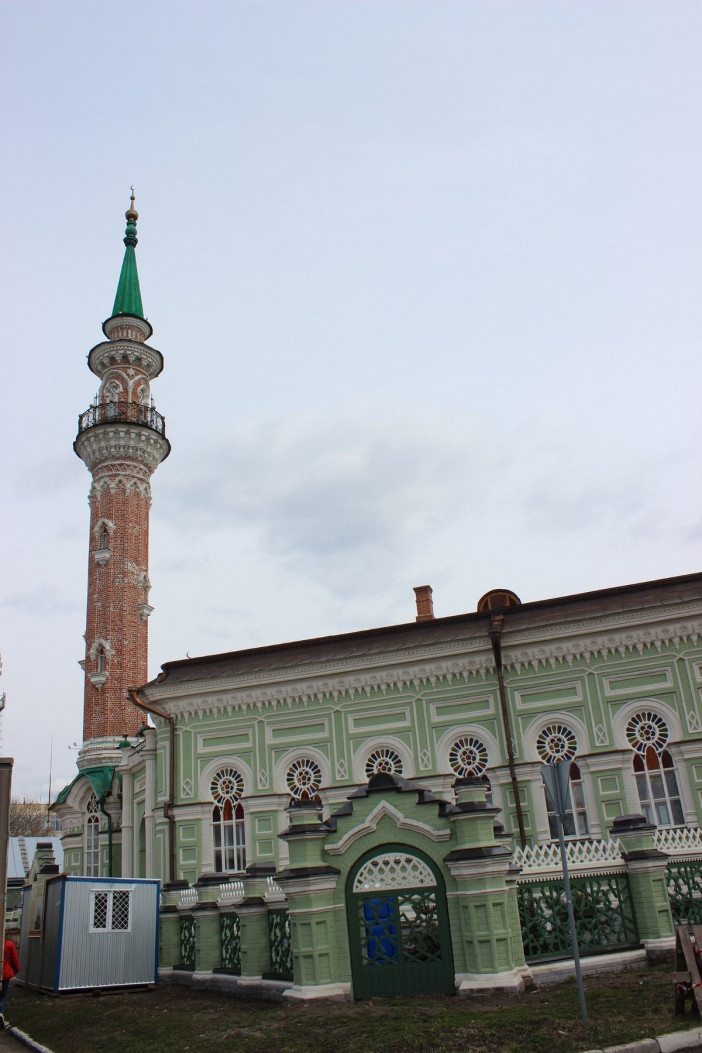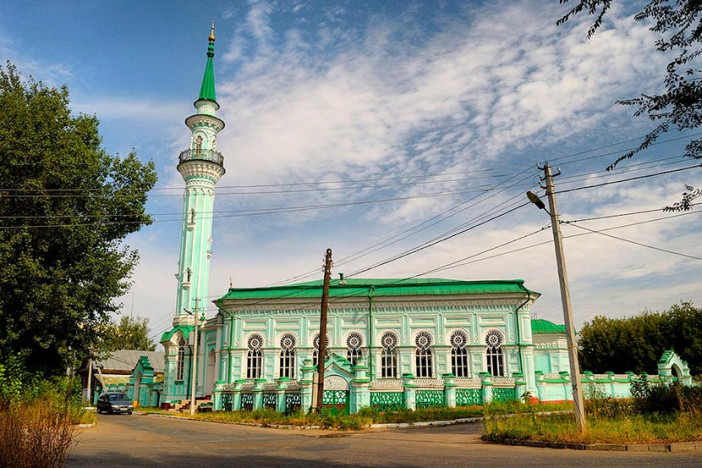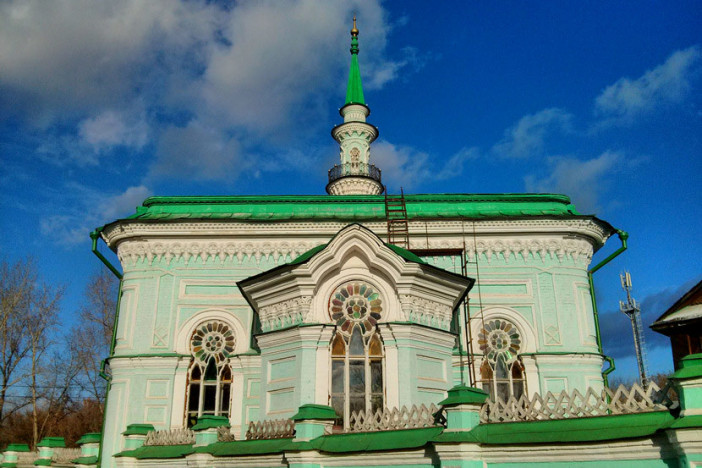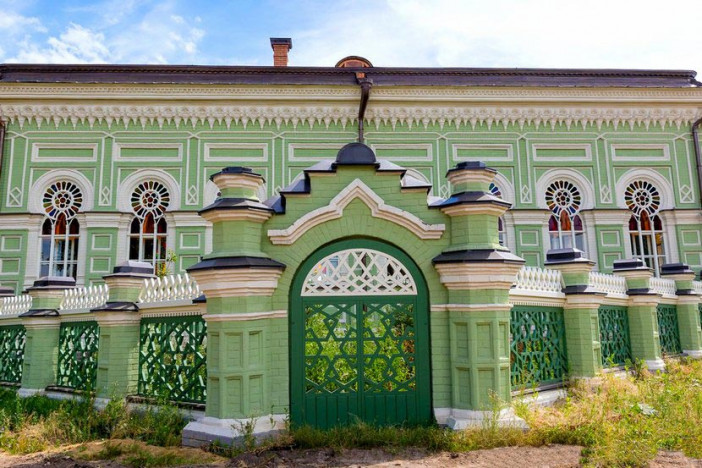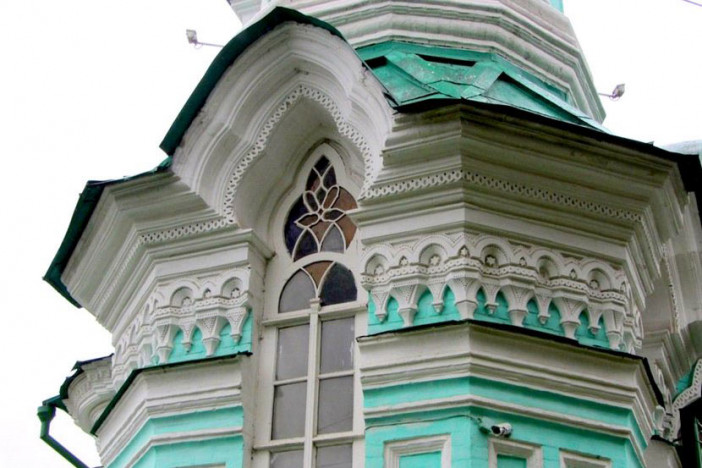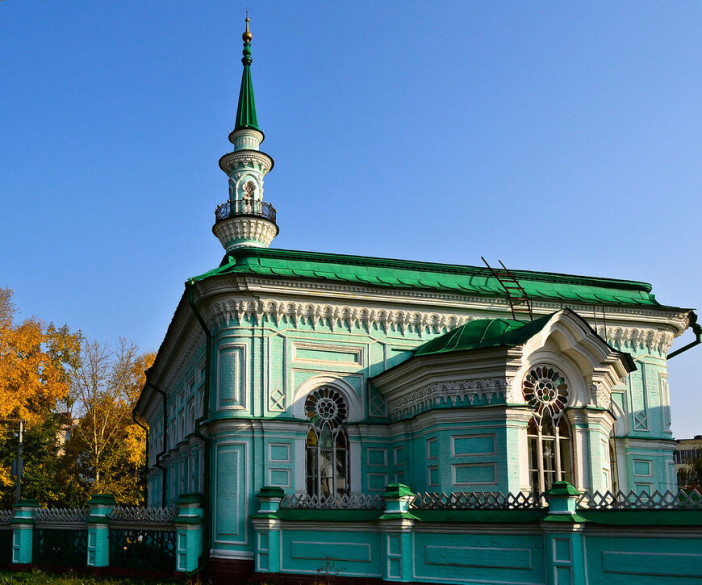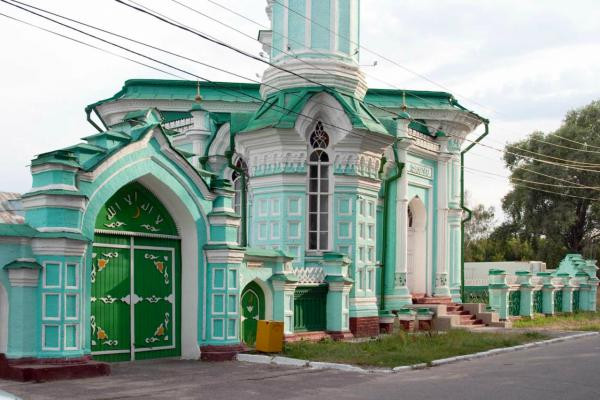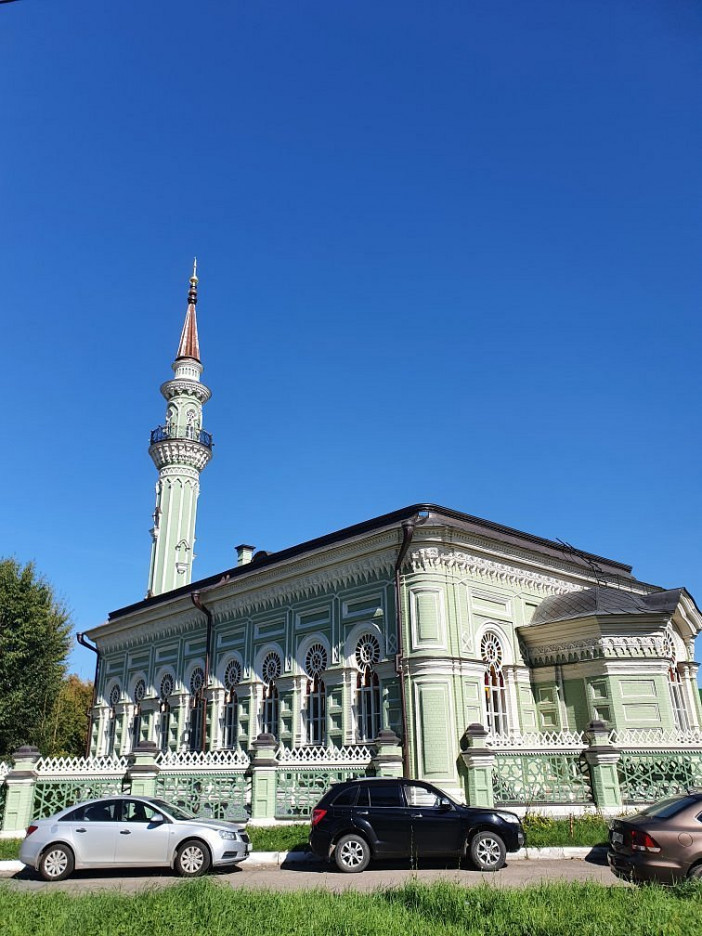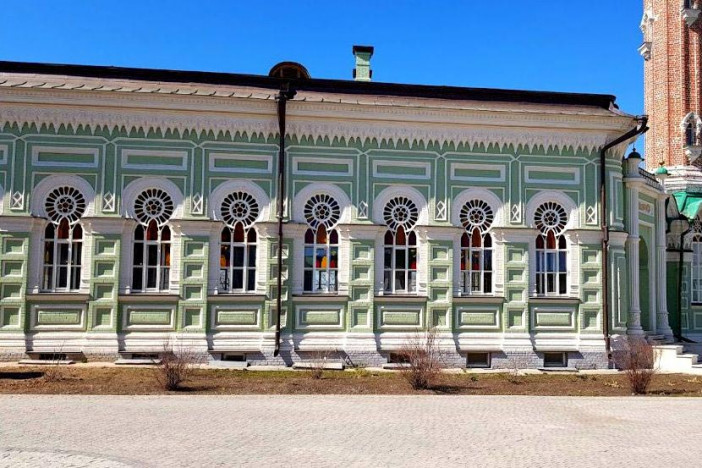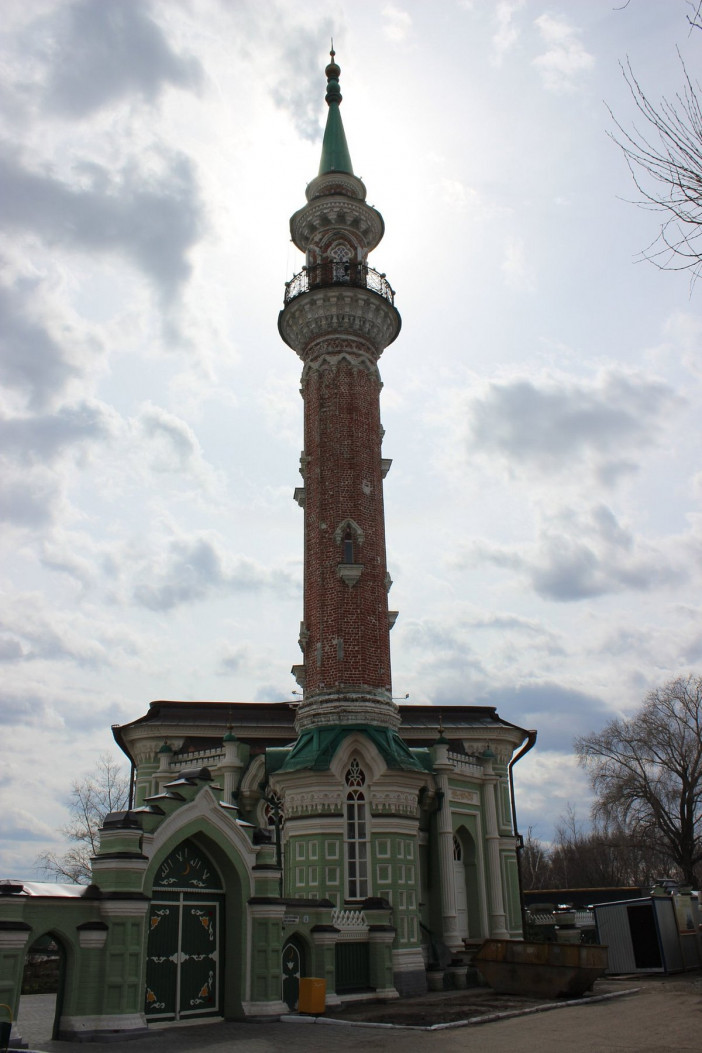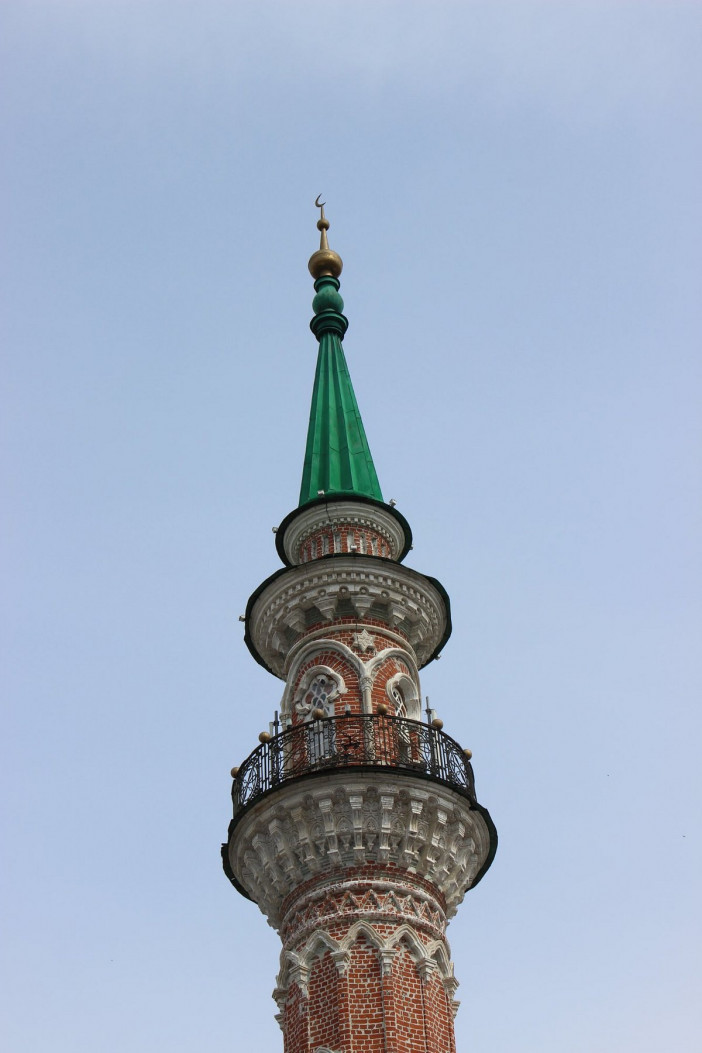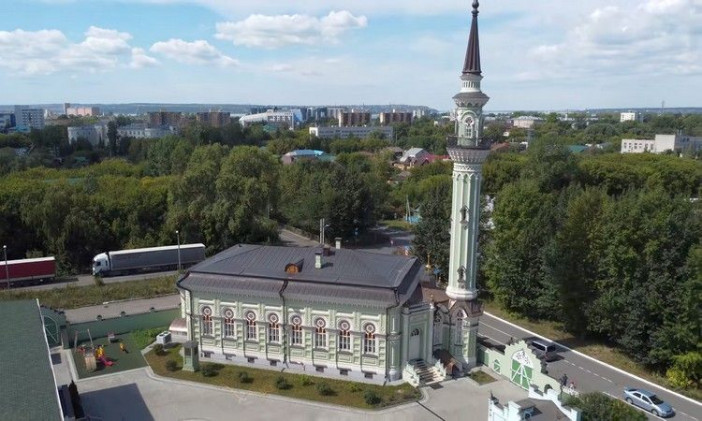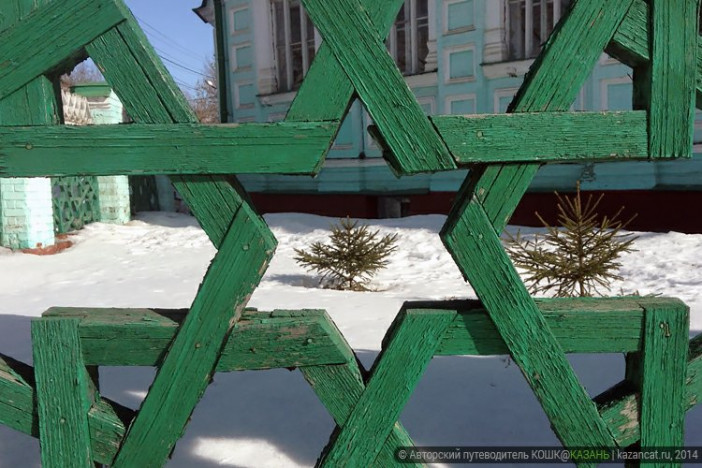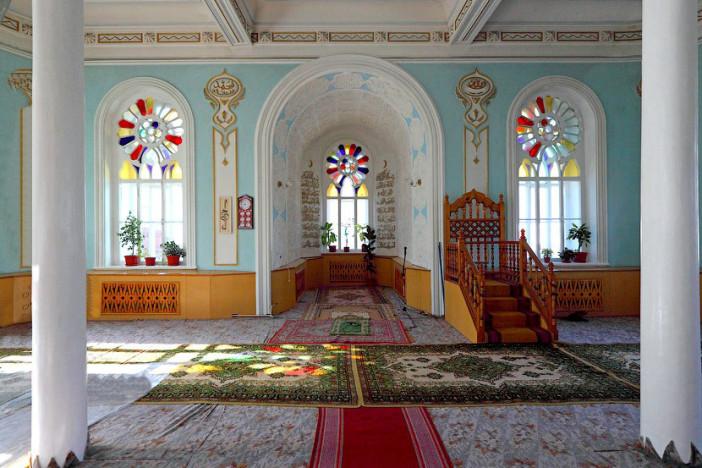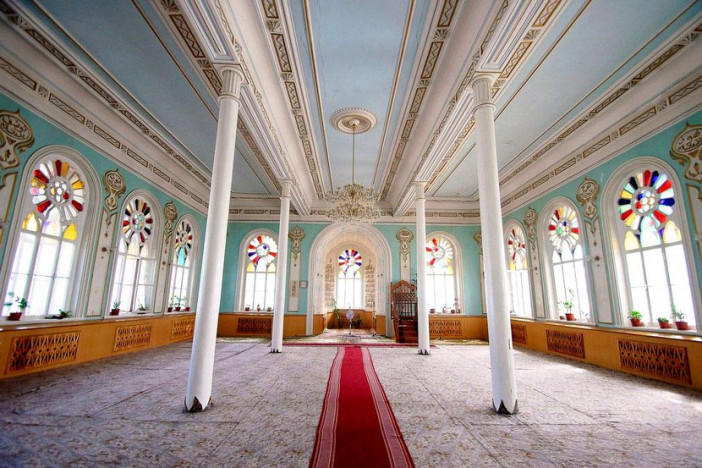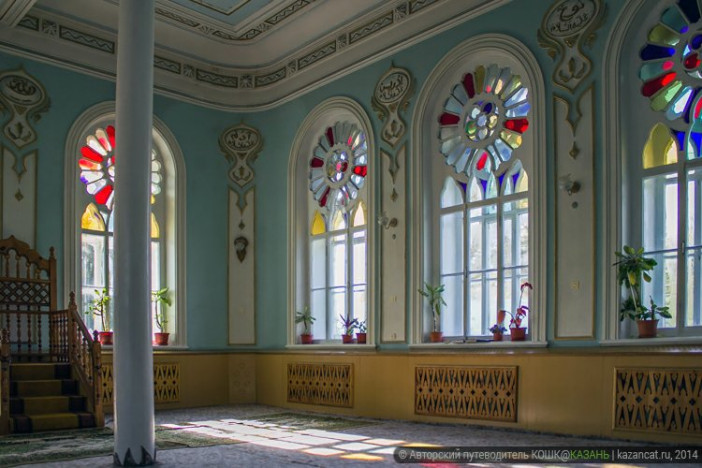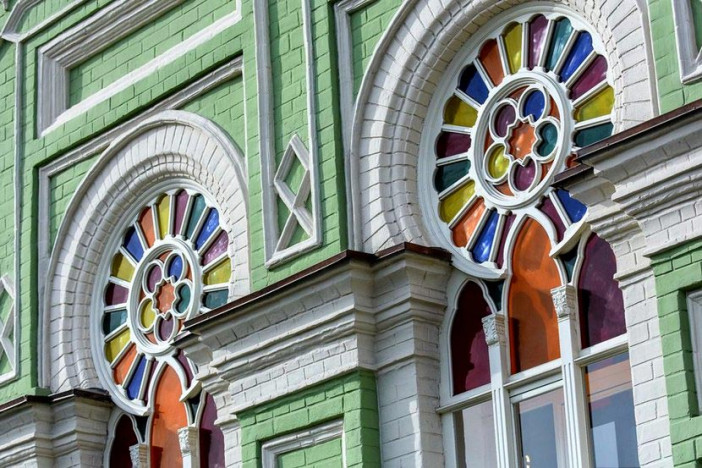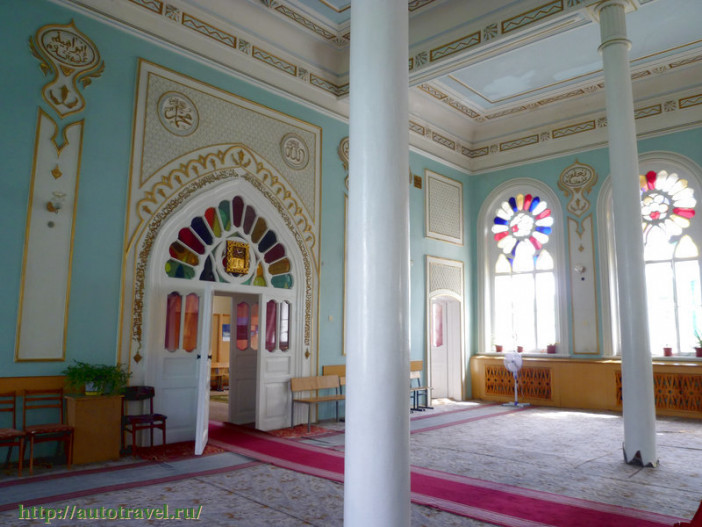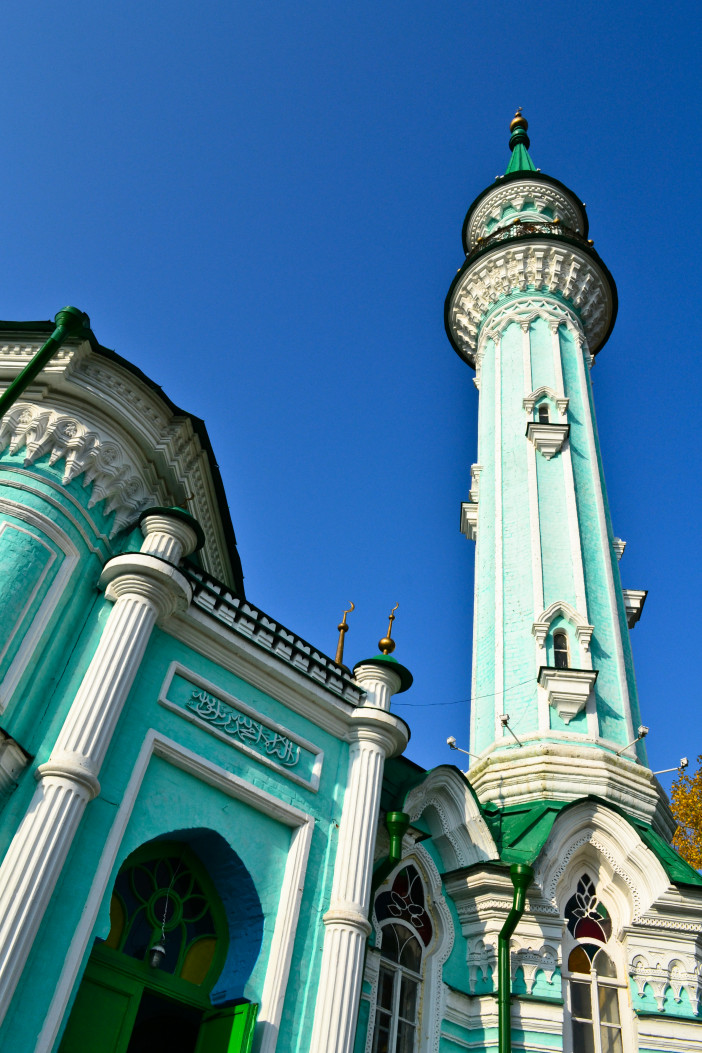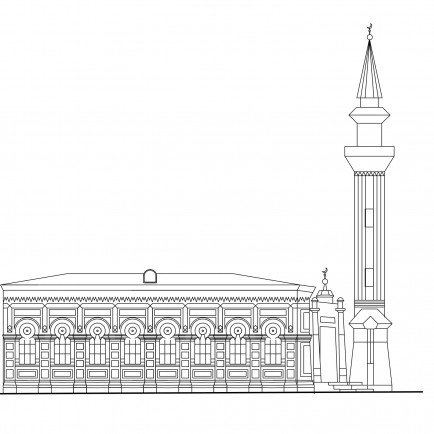Asimov mosque
History
The Azimov Mosque is considered one of the most beautiful mosques in Kazan. It is named after one of the wealthy merchants, the head of the Tatar City Hall, Mustafa Azimov, who in 1851 built it on the site of an old Muslim temple for workers in the soap industry, who lived mainly in the nearby area. a temple for workers in the soap industry, who lived mainly in the nearby area. In 1887, his son, Murtaza Azimov, a merchant of the 1st guild, demolished this building and built a new one - stone and more spacious. The author of the project, who created the new romantic image of the mosque, unfortunately, is still unknown.
In 1930 - 1992, due to the anti-religious policy of the Soviet government, the mosque was not used for its intended purpose. In 1990 - 1992, it was reconstructed and restored according to the project of the architect R. V. Bilyalov. On the territory of the mosque there is a 2-storey building of a madrasah and a wooden house of a mullah. Currently used by the Muslim community.
the mosque was ... red, the color of the brick from which it was built, - Suleiman-aba makes an unexpected statement. - The soft green color was returned to her later.
Urban and Architectural
A distinctive feature of the Azimov mosque is a high three-tiered minaret. It does not emerge from the main building, as in most mosques, but from its own foundation. According to travelers who visited Kazan in the late 19th and early 20th centuries, the minaret of the mosque resembles the ancient minarets of Constantinople.
The minaret of the Azimov Mosque is 51 meters high.
At the very top of the minaret, you can find hexagonal stars, which everyone knows as "Stars of David". In fact, hexagrams are used by many religions, including Islam. For Muslims, this symbol is called the "seal of Suleiman."
For the Ghaffaria Madrasah, a one-story building was built next to the mosque. When the stone temple appeared, the madrasah was made two-storeyed.
The Kazan temple belongs to the type of two-hall mosques-jami. The five-sided mihrab is oriented towards Mecca, so the building stands diagonally in the corner area. The entrances to the mosque lead from the street and from the courtyard. A slender minaret 51 m high is located from the northern end.
The rectangular building is painted in pale green, has rounded corners and a gently sloping hipped roof. Under the main prayer halls is an illuminated basement with two rows of columns. Today there are auxiliary premises and a prayer hall for women.
The three-tiered minaret stands on its own foundation, as was customary in the ancient minarets of Constantinople. The high tower is crowned with a beautiful ribbed tent, and inside there is a spiral staircase that leads to the platform for the muezzin. The minaret is illuminated by small slit-like windows.
Description
References
https://www.tripadvisor.ru/Attraction_Review-g298520-d6491750-Reviews-Azimovskaya_Mosque-Kazan_Republic_of_Tatarstan_Volga_District.html
https://kzngo.ru/place/azimovskaya-mechet-154
https://kazancat.ru/mecheti-kazani-azimovskaya-mechet.html
https://putidorogi-nn.ru/evropa/1096-azimovskaya-mechet-v-kazani
Details
Location
Ulitsa Fatkullina, 15, Kazan, Republic of Tatarstan, russia، 420021
Year of Build
1851
Drawings
Map
History
The Azimov Mosque is considered one of the most beautiful mosques in Kazan. It is named after one of the wealthy merchants, the head of the Tatar City Hall, Mustafa Azimov, who in 1851 built it on the site of an old Muslim temple for workers in the soap industry, who lived mainly in the nearby area. a temple for workers in the soap industry, who lived mainly in the nearby area. In 1887, his son, Murtaza Azimov, a merchant of the 1st guild, demolished this building and built a new one - stone and more spacious. The author of the project, who created the new romantic image of the mosque, unfortunately, is still unknown.
In 1930 - 1992, due to the anti-religious policy of the Soviet government, the mosque was not used for its intended purpose. In 1990 - 1992, it was reconstructed and restored according to the project of the architect R. V. Bilyalov. On the territory of the mosque there is a 2-storey building of a madrasah and a wooden house of a mullah. Currently used by the Muslim community.
the mosque was ... red, the color of the brick from which it was built, - Suleiman-aba makes an unexpected statement. - The soft green color was returned to her later.
Urban and Architectural
A distinctive feature of the Azimov mosque is a high three-tiered minaret. It does not emerge from the main building, as in most mosques, but from its own foundation. According to travelers who visited Kazan in the late 19th and early 20th centuries, the minaret of the mosque resembles the ancient minarets of Constantinople.
The minaret of the Azimov Mosque is 51 meters high.
At the very top of the minaret, you can find hexagonal stars, which everyone knows as "Stars of David". In fact, hexagrams are used by many religions, including Islam. For Muslims, this symbol is called the "seal of Suleiman."
For the Ghaffaria Madrasah, a one-story building was built next to the mosque. When the stone temple appeared, the madrasah was made two-storeyed.
The Kazan temple belongs to the type of two-hall mosques-jami. The five-sided mihrab is oriented towards Mecca, so the building stands diagonally in the corner area. The entrances to the mosque lead from the street and from the courtyard. A slender minaret 51 m high is located from the northern end.
The rectangular building is painted in pale green, has rounded corners and a gently sloping hipped roof. Under the main prayer halls is an illuminated basement with two rows of columns. Today there are auxiliary premises and a prayer hall for women.
The three-tiered minaret stands on its own foundation, as was customary in the ancient minarets of Constantinople. The high tower is crowned with a beautiful ribbed tent, and inside there is a spiral staircase that leads to the platform for the muezzin. The minaret is illuminated by small slit-like windows.
Description


